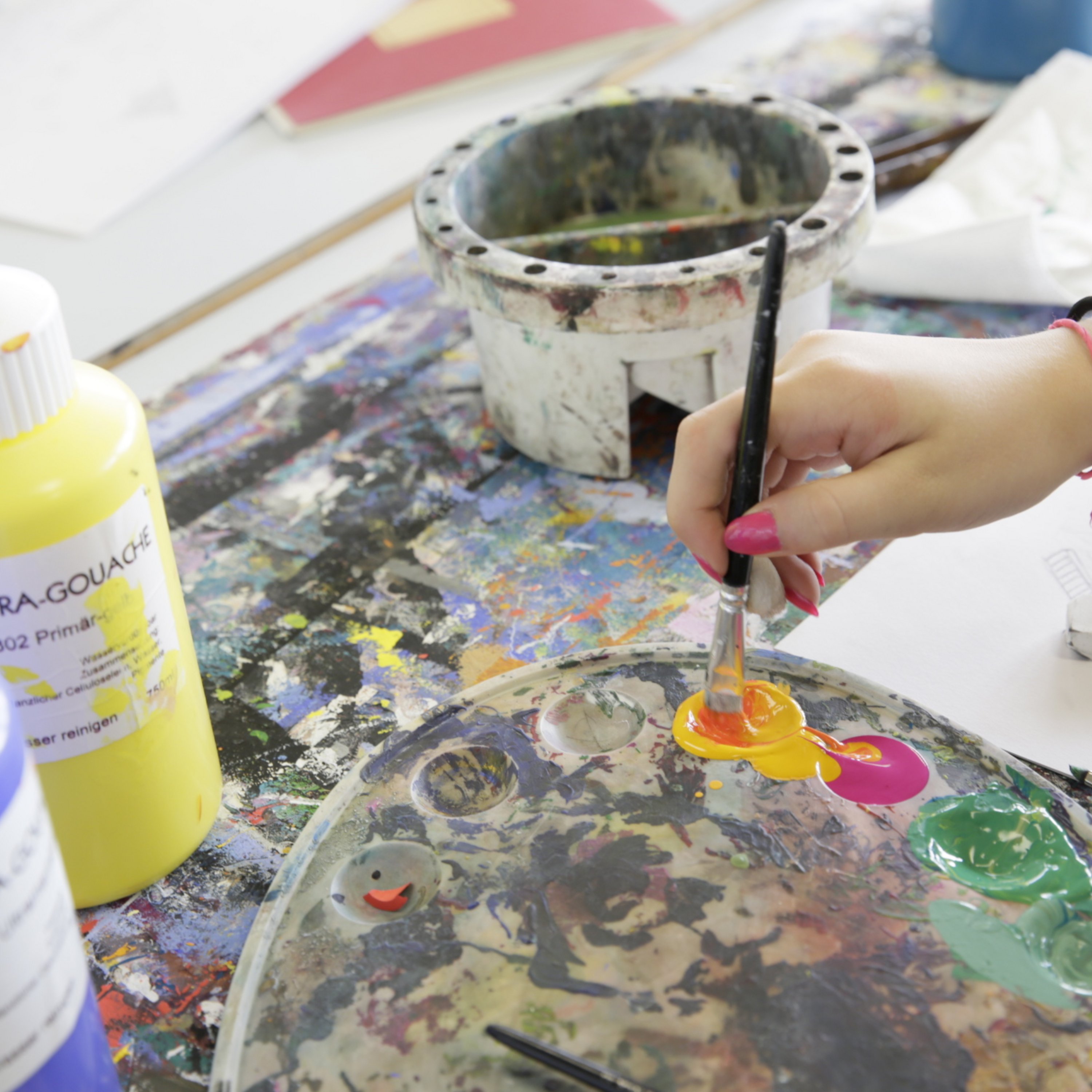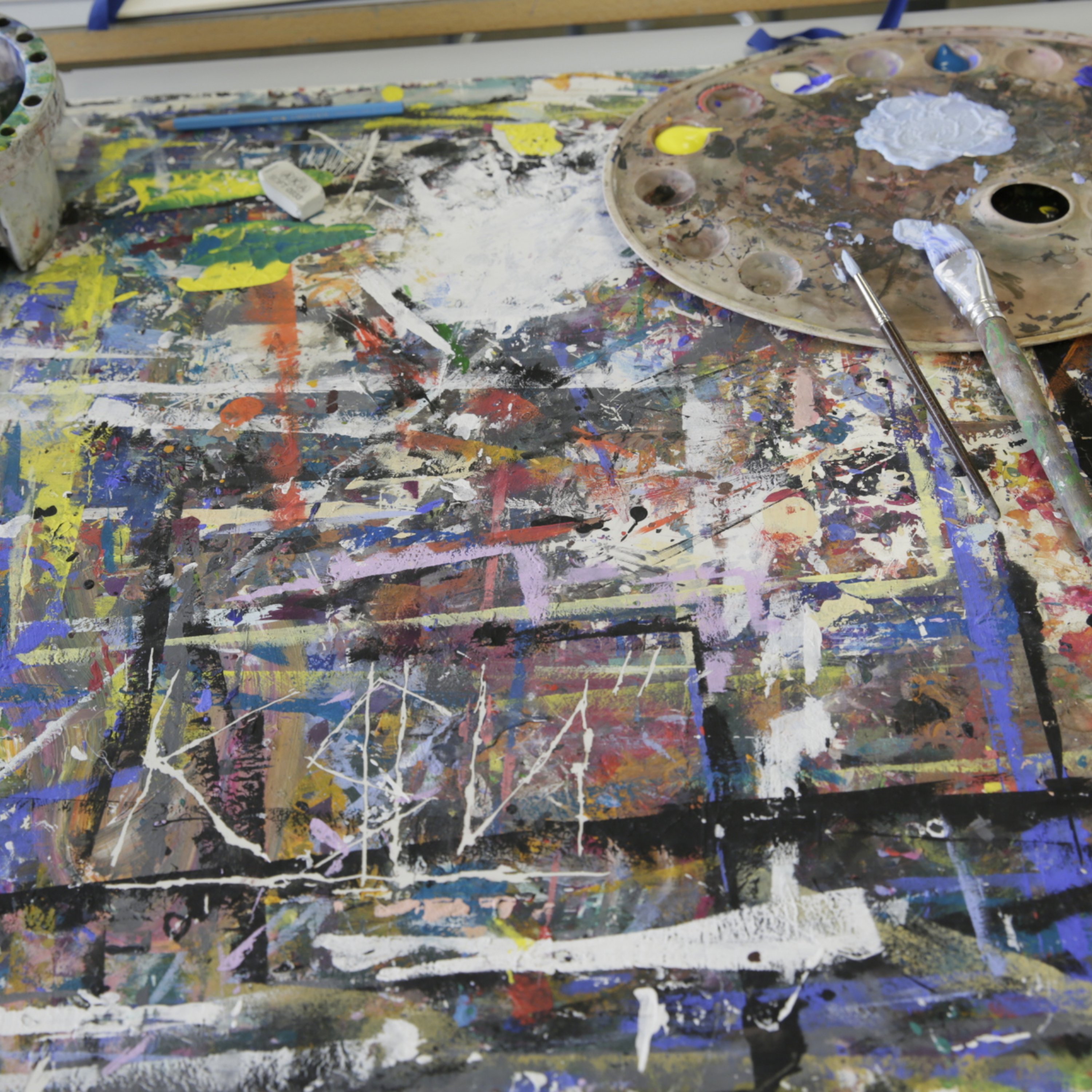Main Content
Visual Arts
Visual Arts (basic subject VK to 4th year Gymn.; supplementary subject 5 and 6 year Gymn.)
Visual Arts (VA) deals with seeing and making visible; it is a form of communication which opens up our eyes to the visible world, as well as the world of mental and emotional pictures. This process calls for sensitivity, a differentiated level of thought, patience and a taste for experimentation.
There is an interdependence between creative visual work and the general development of students. The ways in which young people think and feel become more differentiated as they grow older, and correspondingly they feel the need to express themselves and communicate in a commensurate manner. Their repertoire of perception and design possibilities needs to develop to keep up with their growing requirements otherwise they lose their pleasure in the creative process. This means that, rather than a uniform approach, what is required are individual development steps to help the students to achieve their personal aims while, at the same time, grasping and adapting to their different learning levels.
Students experience an interplay of theory and practice in their VA classes aimed at developing their visual literacy. Exposure to and discussion of works of fine art and applied art, as well as the latest visual media help to promote their understanding of intellectual-cultural contexts and their range of visual language.
Separate History of Art course (4th year Gymn.)
In addition to VA lessons, students in the upper school of Freies Gymnasium Zürich attend a separate one-year course in History of Art (HA) aimed at providing an elementary introduction to art and architecture. The objective is to enable students to understand, describe and classify works of art, such as paintings, sculpture and architecture
Technical, three-dimensional and textile design (VK to 1st year of Progymn.)
In the field of technical, three-dimensional and textile design (3DD and TD), there is also a close interplay of cognitive and hands-on access to the real world in the aesthetic-design learning process. Featuring content from the three fields: technology, body and space, students are encouraged to take part in research, inventive and problem-solving learning and working, and to develop competences in the areas of development, production and reflection Through the conscious choice of materials and by allowing individual processes and results the pupils are encouraged to find different ways to solve problems, to balance differences and both genders are given the chance to experiment with unusual design possibilities.

